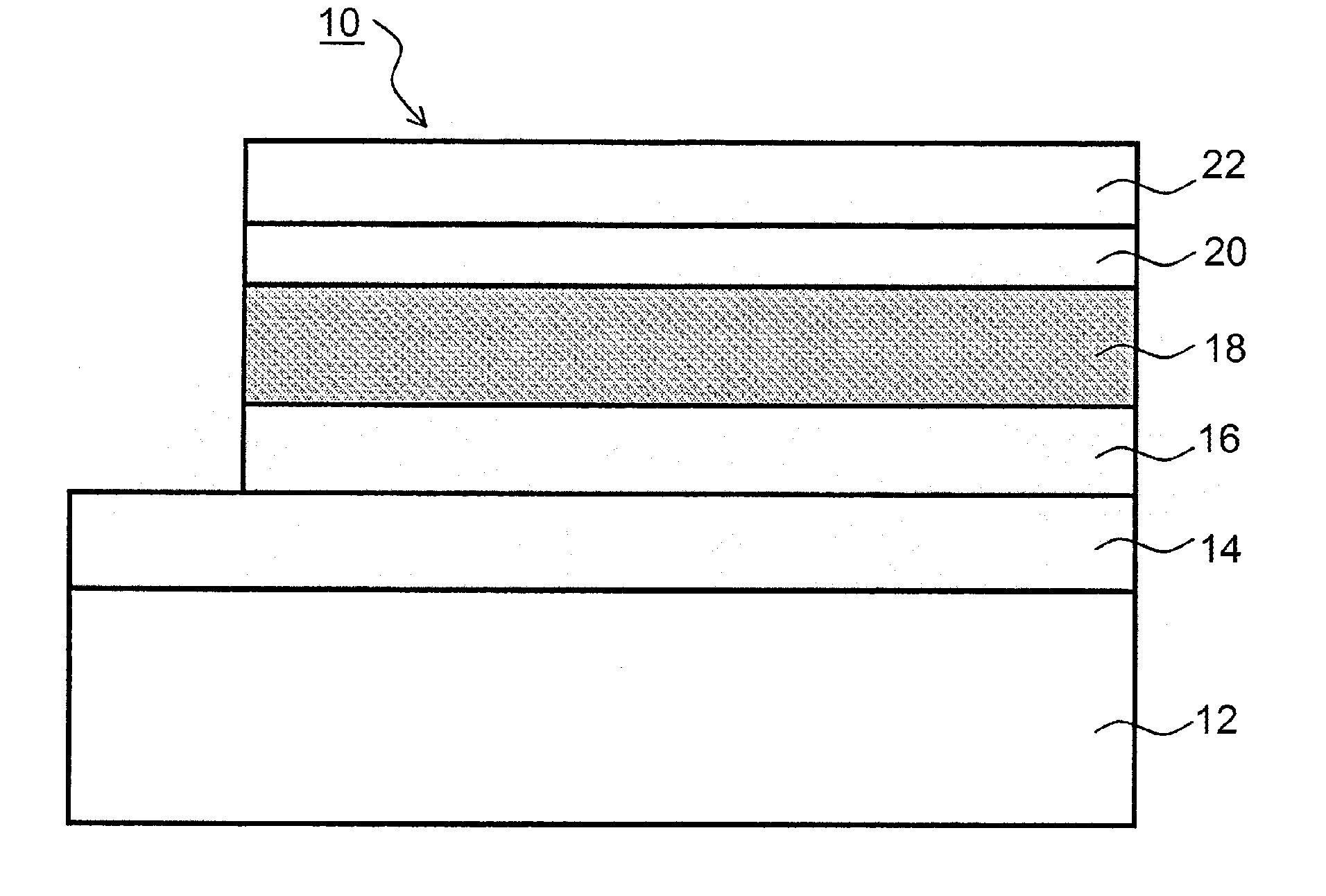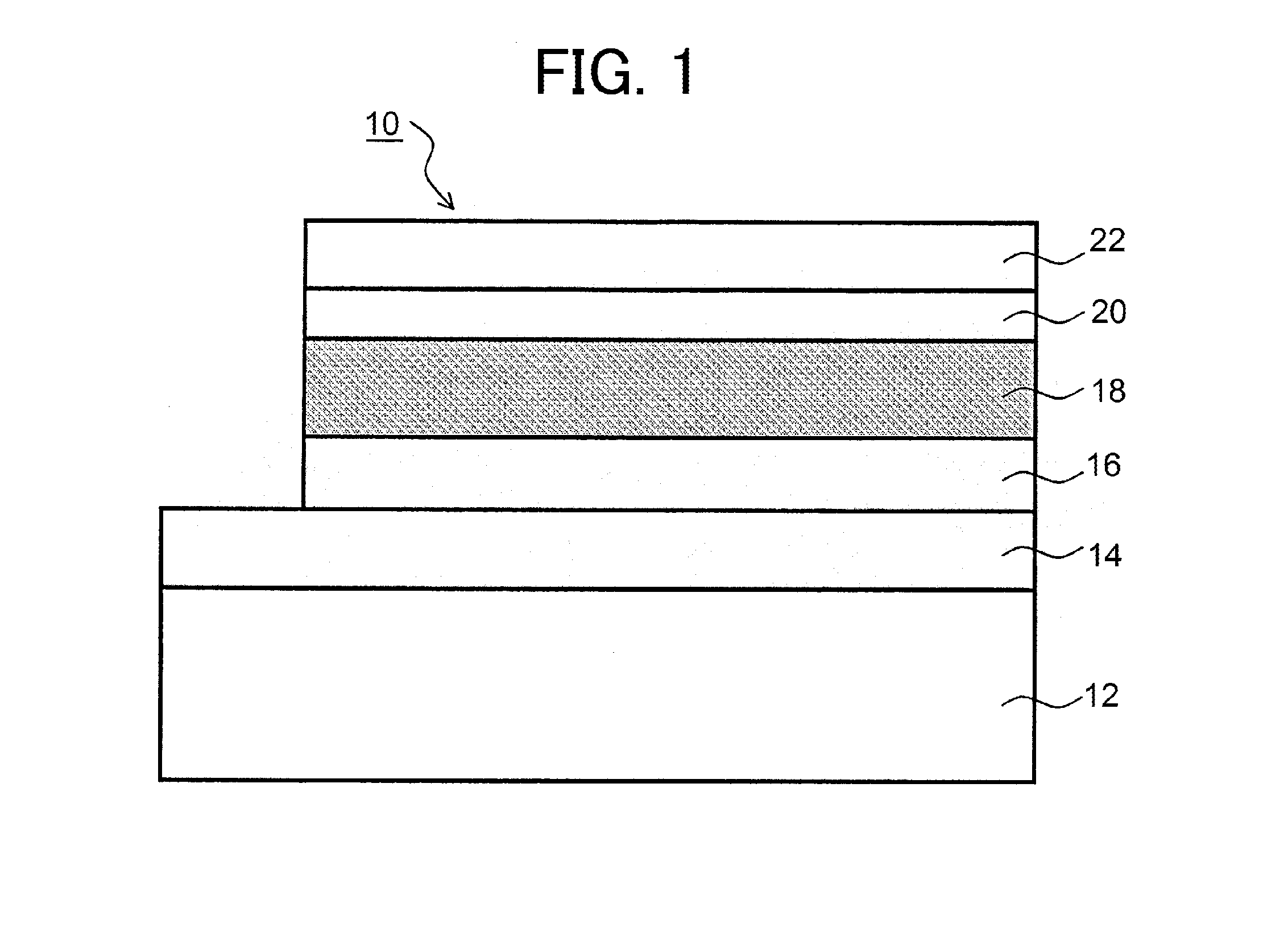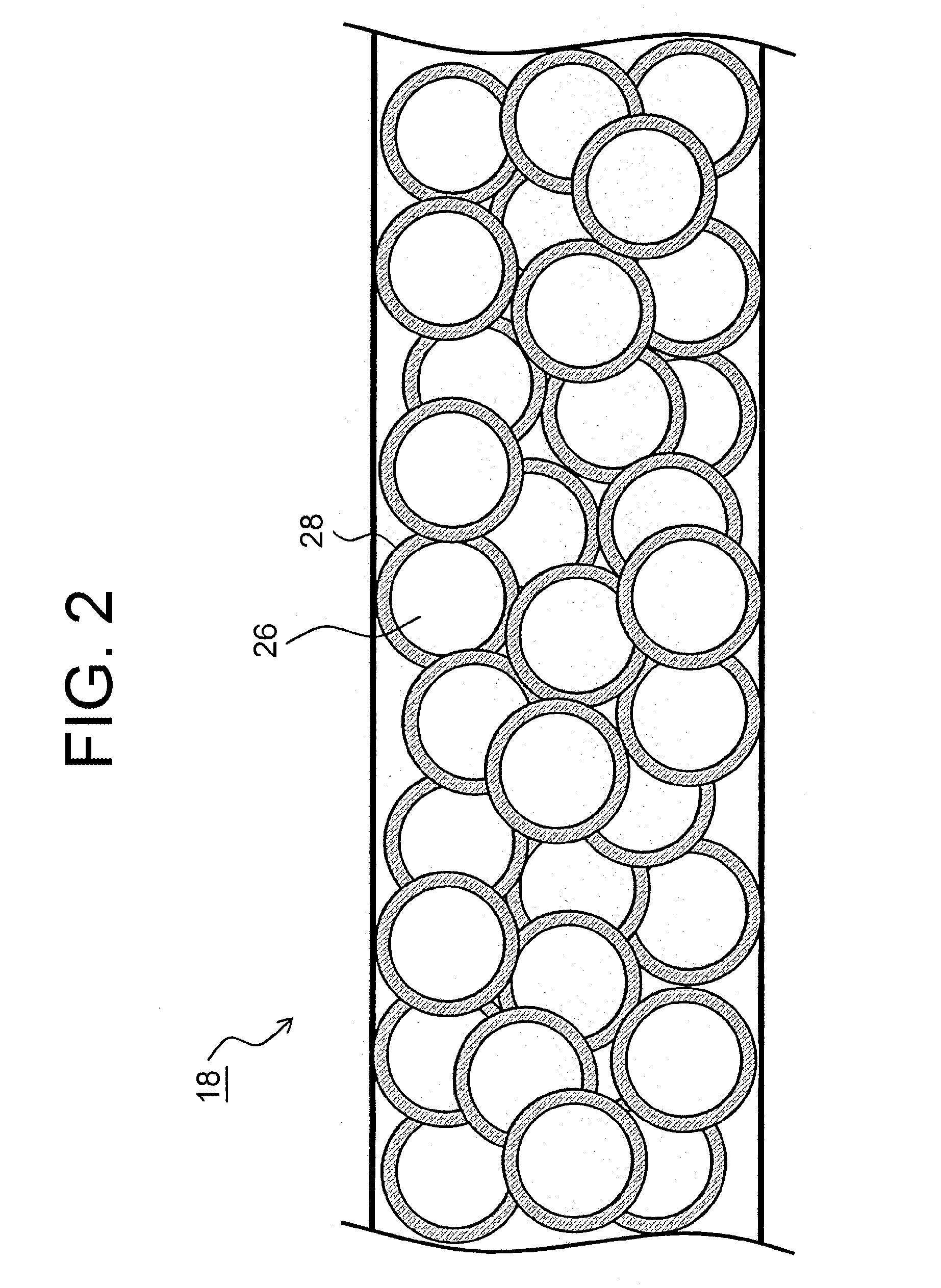Secondary cell
a secondary cell and cell technology, applied in the field of secondary cells, can solve the problems of fuel consumption reduction and difficulty in producing large-capacity cells, and achieve the effects of charge/discharge rate of the secondary cell, improving usability, and improving the charge/discharge capacity
- Summary
- Abstract
- Description
- Claims
- Application Information
AI Technical Summary
Benefits of technology
Problems solved by technology
Method used
Image
Examples
Embodiment Construction
[0031]The present invention is directed to a secondary cell based on a new charging principle of adopting a photoexcited structural change technology in a charging layer.
[0032]The photoexcited structural change refers to the phenomenon of changing the interatomic distance of a substance excited by light irradiation. An n-type metal oxide semiconductor which is an amorphous metal oxide such as tin oxide has the property of causing the photoexcited structural change. By the photoexcited structural change phenomenon, a new energy level is formed in a band gap of the n-type metal oxide semiconductor.
[0033]FIG. 1 is a diagram showing the cross section structure of a secondary cell according to the invention. In FIG. 1, in a secondary cell 10, a conductive first electrode 14 is formed on a substrate 12. Further, an n-type metal oxide semiconductor layer 16, a charging layer 18 for charging energy, a p-type metal oxide semiconductor layer 20, and a second electrode 22 are laminated.
[0034]T...
PUM
 Login to View More
Login to View More Abstract
Description
Claims
Application Information
 Login to View More
Login to View More - R&D
- Intellectual Property
- Life Sciences
- Materials
- Tech Scout
- Unparalleled Data Quality
- Higher Quality Content
- 60% Fewer Hallucinations
Browse by: Latest US Patents, China's latest patents, Technical Efficacy Thesaurus, Application Domain, Technology Topic, Popular Technical Reports.
© 2025 PatSnap. All rights reserved.Legal|Privacy policy|Modern Slavery Act Transparency Statement|Sitemap|About US| Contact US: help@patsnap.com



